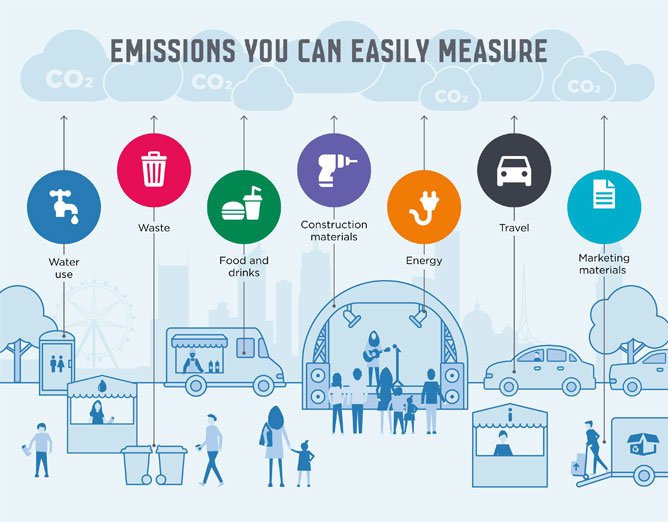Why did we decide to go Carbon Neutral?
We pride ourselves on designing spaces that address energy consumption. Our core aim is to assist others to reconcile their impact on the environment by integrating sustainable practices into their homes. With this pursuit of contributing sustainable architecture to our local communities, it seemed fitting to address the carbon emissions that our office produces.
Although we used our workplace a little differently this year, having to mix both working in the office as well as some work from home, we were able to acquire a Greenhouse Gas Assessment that took these inconsistencies into account.
Figure 2: ‘Where do emissions come from?’ (Source: City of Melbourne)What was the process preceding going Carbon Neutral?
First of all, we needed to gather data about our office expenditure and usages, which was broken down into several categories, including utilities, equipment, employee commutes, transport fuels, third party services, food and beverages, and waste. These groups covered the obvious office uses, such as electricity and printing, as well as the less visible energy uses, for example the varied means and distances of each team member’s commute to and from the office.
The next step was to engage a company which specialises in sustainability, energy and carbon management in order to obtain a Greenhouse Gas Assessment. This enabled us to acquire further qualitative data to understand our energy consumption in terms of carbon emissions and consider the impact that each of our office needs has on the environment.
What were the results of our Greenhouse Gas Assessment?

Our office equipment made up almost a third of our overall carbon emissions, which was not surprising given the number of computers running, our use of paper and other stationary in the day to day carrying out of our work. However, we were quite taken aback by the amount of carbon emissions contributed by our utilities, as we have GreenPower electricity in the office. Having said that, our office is located within a larger building and as such, we also had to take into account the base building services which are not renewable. In total, it is estimated that our office produces 8.6 tonnes of carbon dioxide equivalent yearly.
How did we offset our carbon emissions?
Once we knew our net total figure, we were able to contribute to any number of projects in order to offset our carbon emissions. We decided to donate cleaner cookstoves to the Bugesera region in Rwanda.
This project aims to improve kitchen regimes, as typically meals are prepared over three-stone open fires in poorly ventilated areas. Not only is the firewood unsustainably sourced, it has detrimental health effects. By offsetting our carbon emissions through the purchase of these cookstoves, we are enabling Rwandan families to buy these cookstoves at a highly subsidised price and given the cookstoves are produced in Rwanda, it also creates jobs at a local level. We selected this project as we believe it is an integral part of our work to advocate for the health and wellbeing of others.
What are our next steps?
We decided to offset our carbon emissions for the next three years through contributing to this project. That said, we will continue to strive to reduce our overall in-house carbon emissions. Our soon-to-be renovated office bathroom will provide adequate end of trip facilities to enable more of the team to cycle or run to work. We are also working towards minimising our printing and stationary supplies where possible. We understand lowering our carbon emissions will be an ongoing process and challenge, and we look forward to seeing how far we’ve come when we do our next audit.



